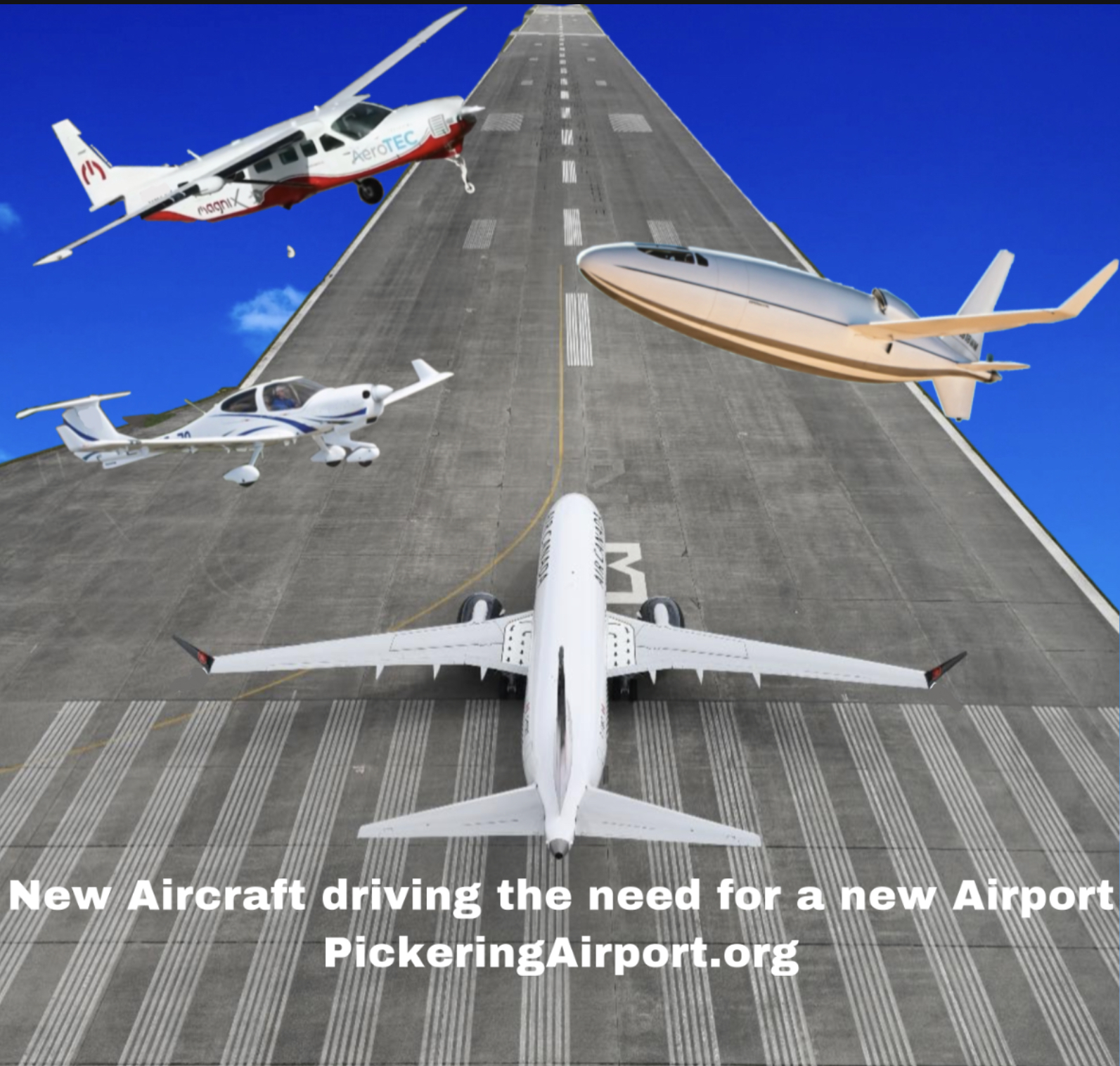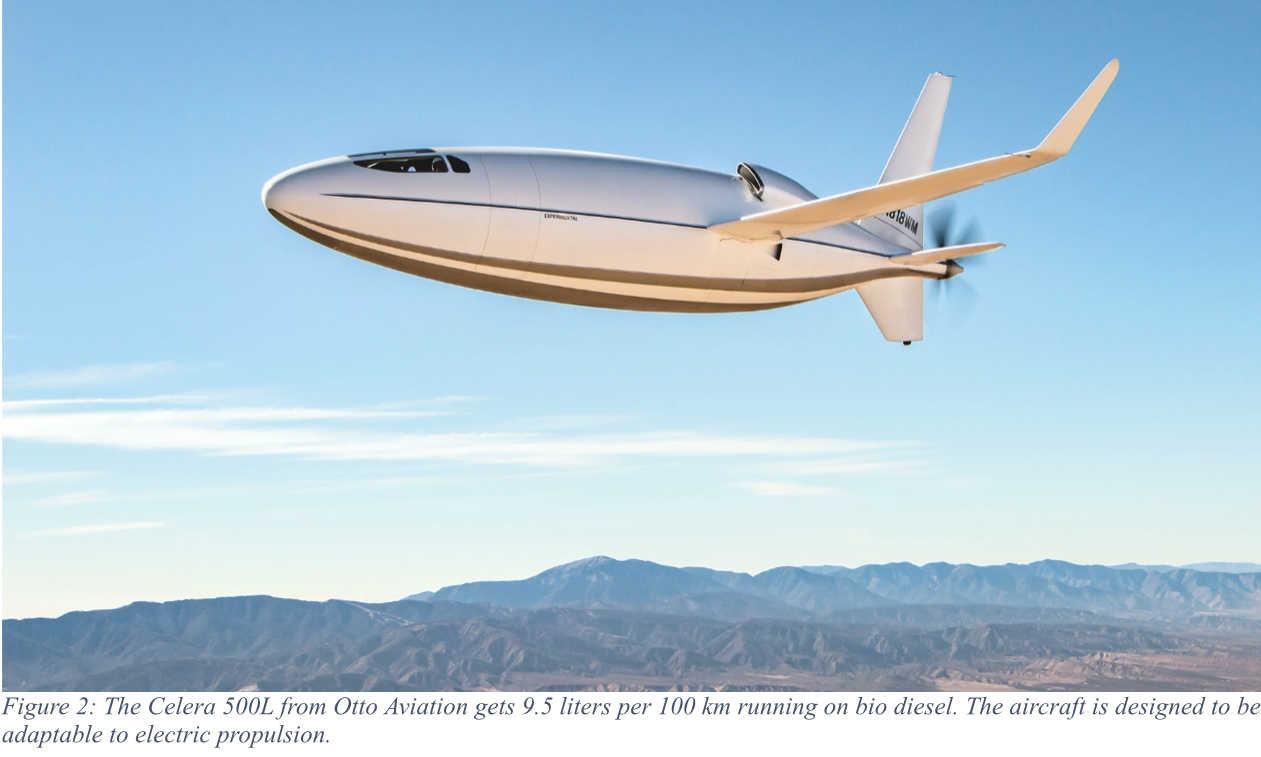Mark Brooks, Sept 17, 2020
In 2029, Pickering Airport will be open. What type of aircraft will call it home? To answer that question, we need to understand two of the forces driving the need for the new airport. One is the economic freedom behind the success of the municipalities in the Greater Toronto Area, the immigration it attracts and the booming growth it creates. The second is the cost reductions and efficiency created by advances in aviation technologies. Aircraft can be separated by how they are used into three sectors: airline, utility, and general aviation. The best-in-class aircraft flying today, the Airbus 220, Celera 500L and Diamond DA40 NG highlight Pickering Airport’s future.

Efficiency drives the aviation industry, and many of the new aircraft expected to dominate the industry in 2029 will have amazing fuel economy, speed and range. The downside of new aircraft efficiency highlights Toronto’s aging aviation infrastructure problem, and gives other municipalities without such restrictions a competitive advantage. Toronto Pearson Airport is landlocked with limited ability to expand. But a solution is in hand — a new airport is being planned just east of Toronto in the city of Pickering.
What type of aircraft will fly out of the new airport? Here are three examples, representing industry trends in three different aircraft classes from large to small, which will call Pickering Airport home in 2029.

The Airbus 220, 320Neo and 321 XLR are blazing a new trail of fuel and greenhouse gas emissions efficiency. They will become the mainstay of airlines such as Air Canada, as well as discount carriers. The Canadian-designed and built Airbus 220 is flying today, supporting Air Canada and other airlines around the world on both regional and long haul routes. It represents a dramatic downshift in aircraft sizes as airlines shift away from the hub and spoke airport system toward more efficient point-to-point flights. Able to achieve 2 liters per hundred km per passenger seat today, the 220 is often the most greenhouse gas efficient way to travel between two cities in Canada. This new class of jets will also replace older, noisier turbo prop aircraft like Porter’s Q400 fleet, that average a once respectable 3.4 liters/100km per passenger seat.
Pickering Airport will be key to enabling this shift. The day of aviation behemoths such as the Boeing 747 and Airbus 380 are over. Smaller, more flexible and fuel-efficient aircraft like the Airbus 220 will replace larger obsolete aircraft. It takes three Airbus 220s to take the same passenger load as a widebody Boeing 747 or 777. That means three times the number of gates, apron and terminal space.

Utility aviation, everything from small cargo flights to executive aviation,is undergoing an equally dramatic shift. The Celera 500L from Otto Aviation, is the first of a number of aircraft that are up to eight times more fuel efficient than older aircraft. At 9.5 liters per 100 km (1.6 liters per 100km per passenger seat), this aircraft has a range of 7000km at speeds of 800km/hr. Able to be powered by jet fuel or bio diesel, it is reaching new levels of efficiency that is clearing the way for hybrid electric powerplants. Pickering will be perfectly placed to compete for this new class of low operating cost, high value, utility aircraft.

General aviation is also undergoing a rapid technology shift that will see hybrid electric and all electric aircraft flying by 2029. But what is flying right now? The diesel powered Diamond DA40 NG is an easy to fly four-seat aircraft delivering the efficiency of the next generation of general aviation aircraft. Manufactured in London, Ontario, it is more fuel efficient than a new car, sipping fuel at 6.8 liters per 100km, (1.7 liters per 100 kmper seat). At 285 kph it is also three times faster than a car, flies straight as an arrow asphalt free and features advanced glass panel avionics.
The three aircraft mentioned are examples of how fuel efficiency is driving lower costs. There is little margin or tolerance in the future for the high cost of congestion, monopolistic or gold-plated infrastructure. The efficient development of Pickering Airport is key to supporting the next generation of aircraft in the Toronto region. On the horizon are even more efficiency electric and electric hybrid powered aircraft. Electric conversion of existing aircraft, such as Harbour Air’s now famous electric Beaver or a Cessna Caravan utility aircraft, will be first. Purpose-designed electric aircraft will follow, but all will require a decongested airport like Pickering to compensate for shorter endurances.
The new airport will be an important driver of economic efficiency and opportunity. It is ludicrous to expect people and businesses to rely on other airports, such as Hamilton or Waterloo, which are hours away (by car) from Toronto’s eastern population base. In 2030, a taxi ride from Toronto to Waterloo will cost more, and take longer than flying to many regional destinations on a discount carrier.
Aviation is at the heart of the global economy and local, accessible infrastructure and services are at the heart of Canada’s free enterprise economy. Pouring government money into distant airports and expecting people to use those airports, undercuts the efficiency of business and the economic freedom enjoyed by Canadians. Economic freedom is the fundamental right of every human to control his or her own labour and property. In a free society individuals are free to work, produce, consume and travel. Pickering Airport, funded privately or with an appropriate public investment, will enable the citizens of the Greater Toronto Area to continue to efficiently consume aviation services and compete in the global economy
The new airport in Pickering will create 50,000 jobs, add billions to our local economy, by enabling economic efficiency and free enterprise. New fuel efficient aircraft of all sizes will be drawn to and thrive at Pickering Airport. Together they will reduce the cost of travel and reduce our greenhouse gas emissions. With little space remaining for development at Pearson, Pickering will be the new home for the next generation of Canadian aerospace companies.
It is time for the federal government to show some leadership on developing Pickering Airport. It can either follow the local municipalities’ constant requests to get going, or just get out of the way.
Reference:
Celera 500 L from Otto Aviation
Airline Industry dumping four engine aircraft
United Airlines Strategic shift
2029?..rubbish. All this based on the false proposition toronto is full and the past is linear to the future.
All of these aircraft can operate from the Oshawa airport property.
50,000 jobs. Man how that number expands like the fish that got away.
O’toole got ur hopes up?
No that is incorrect, demand is one part of the argument, spinning that does you no good when profitability and job creation are considered. The airport can be profitably built and run today adding valuable jobs and tax revenue to our community. It will foster a competitive environment and support free enterprise.
It will also save GHG, reduce noise pollution and improve the quality of life for our citizens.
Both liberals and conservative governments will built it, they only seem to differ on time and what to do about the insider problem.
Very well written. This airport can certainly be the model for aviation infrastructure in the future, designed to accommodate more fuel efficient and quieter aircraft that will take us further and faster.